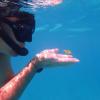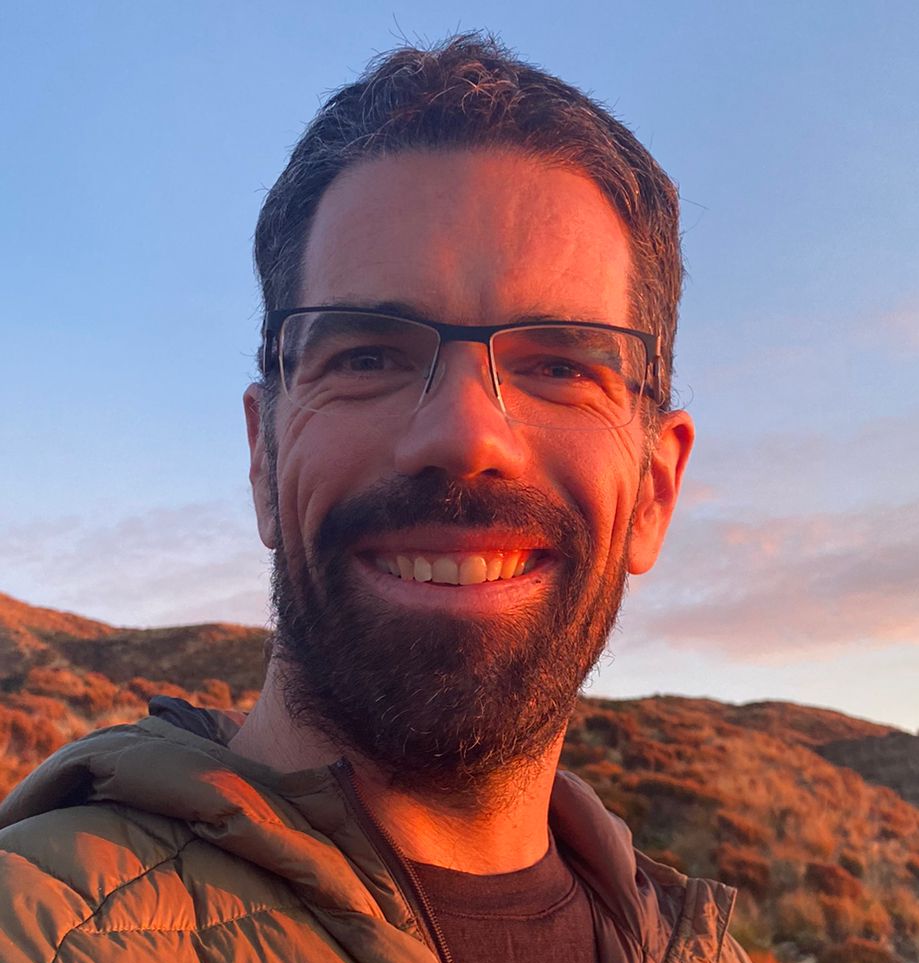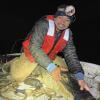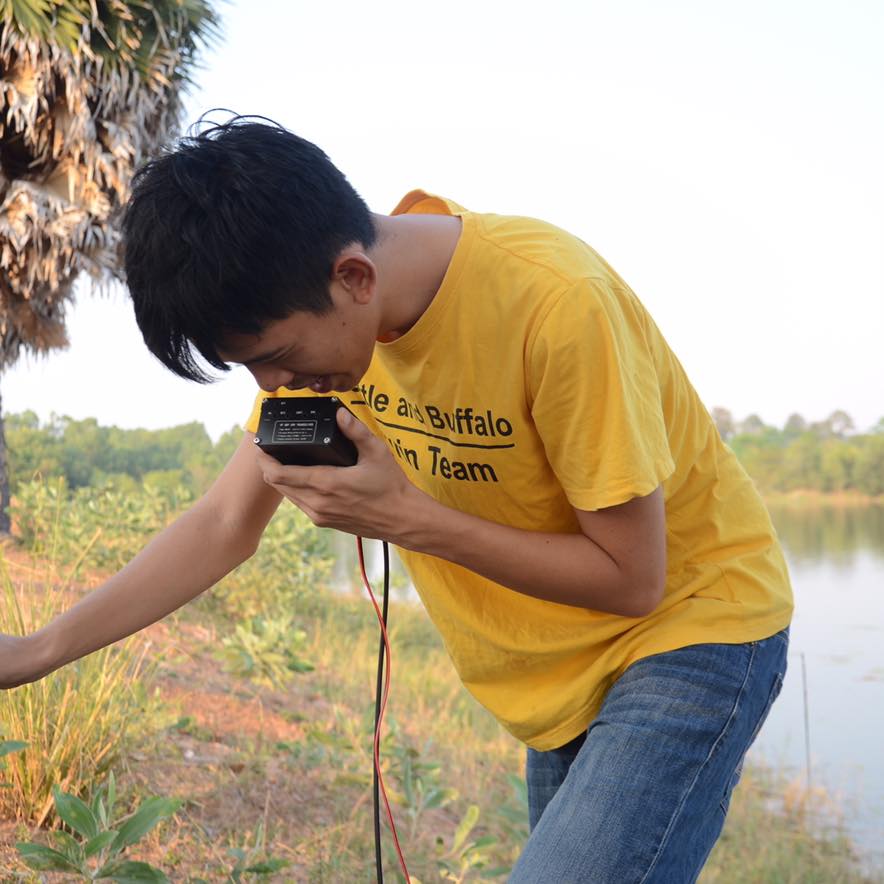GIS E-learning Course 2: Introduction to QGIS
 Chelsea Smith
and 3 more
Chelsea Smith
and 3 more
5 March 2025 9:20am
GIS E-learning Course 1: What is GIS and why should you care?
 Chelsea Smith
and 3 more
Chelsea Smith
and 3 more
5 March 2025 9:15am
Camera Trapping for Conservation
 Meredith Palmer
and 1 more
Meredith Palmer
and 1 more
5 March 2025 9:10am
Introduction to Acoustic Monitoring
5 March 2025 9:05am
Introduction to Conservation Technology
5 March 2025 9:00am
Advancing Hierarchical Classification of Ocean Life
4 March 2025 10:09pm
Watch Now: Innovative Funding Mechanisms for Conservation Technology, WILDLABS at World Wildlife Day 2025
4 March 2025 6:56pm
What are open source solutions anyway?
1 November 2024 2:21pm
11 December 2024 12:34pm
Open source technologies are a game-changer for biodiversity conservation. They give us the freedom to use, study, modify, and share vital tools and knowledge that help advance research in meaningful ways. For conservationists, this means we can adapt technologies to meet local needs, improve existing tools, and make new innovations available to everyone—creating a more collaborative and sustainable future for our planet.
It’s exciting to see the impact of open source in conservation already, with tools like Mothbox, Fieldkit, and OpenCTD helping to drive progress. I'm curious—how do the formal definitions of open source resonate with you? How do they shape the way we approach conservation?
Also, if you're interested in how open source AI can support conservation efforts, check out this article: Open Source AI Agents: How to Use Them and Best Examples.
Can’t wait to hear your thoughts! Let's keep the conversation going.
11 December 2024 9:04pm
Sorry to be a stickler on syntax when there is a richer discussion about community here - but I believe a true "open source" project is a functionally complete reference design that anyone can build upon with no strings attached. If the community isn’t provided with enough information to fully build and iterate on the design independently, then the project doesn’t truly meet the spirit of open source.
As a developer and engineer, I’ve observed that sometimes projects crowdsource free engineering work under the guise of being "open source." While this can have benefits, it can feel like asking for a free lunch from clients and customers.
Advanced features—like enterprise-level data management or tools for large-scale deployments—can reasonably remain proprietary to sustain the project financially. Transparency is critical here. If the foundational components aren’t fully open, it would be more accurate to describe the project as "community-driven" or "partially open." And as an engineer/developer I wouldn't be angry when I went to explore the project marked "open source" only to find that I have been lied to.
Just my two cents, and I really appreciate the thoughtful discussion here. The open source community has been a massive influence on me. Everything I do at work would not be possible without it. In many ways, "open source" or "public domain" projects represents the true know-how of our society.
4 March 2025 3:27pm
Thanks again for the interesting discussion everyone!
Just a note that while I touched on it in my opening post above, there were still questions in this thread about what open source tech means. I tried to address that in my new thread here:
Definitions for open source software & hardware and why they're important
27 February 2025 10:58am
28 February 2025 5:26pm
Thanks for this excellent and thought-provoking post, Pen. I agree this is a binary yes/no issue, but there is a spectrum. There could also be philosophical nuances. For example, does excluding honey from a vegan diet meet the ethical criteria of veganism? It's an animal product, so yes, but beekeeping generally doesn't have the same exploitative potential as cow, sheep, or pig husbandry, right? However, looking strictly at the definition, honey is out if you want to be vegan.
Back to software! Isn’t the main issue that companies falsely claim to offer open source hardware/software? To avoid this, do you then have to create an accreditation system? Who polices it? Is it fair? Would users care that their software has the accredited open source stamp of approval? Ultimately, we need definitions to define boundaries and speak a common language.
4 March 2025 3:21pm
Thanks @VAR1 great insights! Funny you mentioned the honey thing, @hikinghack said the same in response on the GOSH forum.
I think the point I'm trying to make with the vegan comparison is that while it might not be 100%, it is close enough for us to have productive conversations about it without running in circles because we can't even agree on what we are talking about.
As for open source tech, there actually is accreditation for open source hardware (at least of a sort). The Open Source Hardware Association has a fairly mature certificate program:
OSHWA Certification
Certification provides an easy and straightforward way for producers to indicate that their products meet a well-defined standard for open-source compliance.
I am genuinely undecided whether such a formal accreditation system is required for open source software. My undecided-ness comes back to the food/agriculture analogy, where a similar issue exists for organic certification. Being certified organic could possibly, in some cases, be beneficial. However, certification can also be very onerous for small organic farmers who can't afford to get it.
But before we even think about accreditation, I echo your last sentence that we need definitions to define boundaries. These definitions, as I argue in my original post above, is not only about principles and philosophy, they are also a practical necessity for enabling effective communication!
What is your favourite social media these days?
29 January 2025 7:27am
3 March 2025 9:22pm
Good news, we are BACK on Bluesky! Give us a follow if you're on it!
@wildlabs.bsky.social on Bluesky
The global, open online community dedicated to conservation technology. How are you using #Tech4Wildlife? http://linktr.ee/wildlabsnet
3 March 2025 9:23pm
We were recently dealing with some moderation issues with the Bluesky team but are happy to report we're back! Give us a follow :)
@wildlabs.bsky.social on Bluesky
The global, open online community dedicated to conservation technology. How are you using #Tech4Wildlife? http://linktr.ee/wildlabsnet
4 March 2025 8:36am
Linkedin mainly.
iNaturalist and eBird ofc but these are more communities than real social networks.
But, and this is a real advice, a good RSS feed reader with all your trusted sources and then you don't need any other social network.
:O)
LiDAR for Wildlife Size Measurement
19 February 2025 11:10pm
28 February 2025 7:06pm
That’s pretty cool. It took me a while to realise that you were referring to a software package. So for others like me, here’s a link
4 March 2025 3:50am
Thanks Kim, yes we're aware that PIR has many pitfalls, especially when it comes to small things far away, which is often the case for us. But we can accept missing some detections for indexing purposes if we win in other areas like battery life, size or affordability. We're currently able to detect small birds from a useful distance with Browning trail cameras.
If I do dust off my soldering iron & actually make something it will be on a scale of 1, for dataset building proof of concept stage, not for large scale use. It would likely include a variety of sensors so I can make meaningful comparisons & propose a sensible combination. The detection part could be as simple as pixel subtraction from video footage I imagine.
4 March 2025 3:51am
Thanks Jack, that's an interesting repo.
WILDLABS Conservation Tech Meetup, DC
3 March 2025 8:55pm
7 March 2025 7:54pm
7 March 2025 8:40pm
23 March 2025 12:58am
WILDLABS Joins Bluesky
Wildlife Monitoring Internship 2025
3 March 2025 3:02pm
GPS Tracker For Wildlife
27 February 2025 12:13pm
2 March 2025 11:34am
Thank you for this valuable information!
Some of the features you mentioned can be quickly added to Loko, while others require more consideration. Loko’s communication is one-way—meaning the transmitter doesn’t know whether the receiver has received the data. This design choice is made to conserve battery life. However, all data is logged internally and can be accessed via USB.
I will add GeoTIFF loading to the Loko App. Currently, Loko is not suitable for wildlife tracking because it is not waterproof, but I am working on improving its mechanical design.
Loko already supports multiple connections, allowing many transmitters to connect to a single receiver or/and multiple receivers.
Regarding encryption: What do you mean by "Encryption should not be optional"?
Are you suggesting that communication should always be encrypted by default? on loko I made it user-configurable because encrypted data packets are 32 bytes, whereas unencrypted ones are 18 bytes. A smaller data packet improves reception sensitivity and extends the transmission range.
In your opinion, what would be a reasonable price for such a device? This is very important when adding new hardware features.
Cheers,
Akio)
2 March 2025 11:42am
Hi Herhanu , appreciate for your valuable feedbacks.
- can you explain what type of release mechanisim do you mean , picture will be much helpfull . do you mean with a remote release mechanisim activates and release the tracker from crocodile collar?
- how far data need to be sent ? with a mesh network of Loko receivers wide range of area can be covered i guess.
- long distance transmission is very challanging when transmitter is very close the ground , on crocodiles especially.
for what purpose do would you use accelerometer data? is there any specific use case?
Cheers, )
2 March 2025 11:55pm
Sure, Akio! Happy to answer!
1. Yes, something like that. The few existing i guess applied already for GPS collar (literally collar) that usually for big cats and some other big mammals. There is also GPS tag for Cetaceans that can pop up, but its only remained with the animals several days CMIIW (eg see links below)
link 1
2. I guess it depends on your research questions or project objectives. But for crocodile they can have vast home range from 100 ha to 10,000 ha (depends on species). For my species, it at least uses 500 ha of area, and the farthest between points can be 15km apart.
3. accelerometer, especially in crocodile can give insight about their movement ability. As they can random as they can be - or being a statue for hours (like when you look at crocs in the zoo). Of course this would depends on your objectives.
Hope this helps!
Cheers~
Guidance for Media Project in Rhodoppe
28 February 2025 9:53am
28 February 2025 1:26pm
Very cool project though, success with it.
1 March 2025 9:17am
Hi Oren.
Since we interface our devices to many different camera traps, we've had the chance to observe the image quality (as well as the innards) of a variety of them. I would say that at the moment, we interface our devices to Browning camera traps compared to others by a wide margin. this was only in the last few years as Reconyx and Bushnell also used to be more popular. For image quality, I would recommend Browning Spec Ops and Recon Force. If you're on X or Instragram, I recommend checking out the videos from @cameratrapsue . She mainly uses Browning and they are a good example of the image quality.
As an aside, we have no connection to Browning and do not receive anything from them. We're just trying to help :)
Akiba
2 March 2025 11:48am
Thanks Akiba! That's the conclusion I got to as well. Glad to have your vote too. Thanks!
Building flexible antennas for telemetry radio
10 October 2024 5:59am
21 October 2024 3:01pm
This is very cool Chittakon! I have about approximately 1000 measuring tapes lying around in my garage that would be perfect for this (and if I happen to have to measure something in the field I can!)! An no more fighting my way through the bush with solid Yagis!!
Cheers,
Rob
2 March 2025 9:07am
This is great, I am looking at making a 173mhz flexible aerial and was wondering whether you have the spec needed for this at all?
Thanks!
2 March 2025 10:29am
I would simply scale the dimensions (150/173=0,87) making the antenna smaller, but keep the feeding (1cm, 9 turns, etc) the same.
Postdoc in bird modelling and remote sensing
28 February 2025 6:57pm
Career Move: Defence AI to Conservation AI
19 February 2025 12:01pm
22 February 2025 2:21pm
Hey Margaux,
Thanks so much for such an informative response, really appreciate it. I’ll be look into every avenue you’ve suggested!
And congratulations on the job, your company honestly looks like the dream. Well done for sticking it out for the right opportunity.
Re. your point on software integration, I’m a Data Scientist primarily but much of my current work revolves around integrating off-the-shelf models (e.g. vision-language models) into existing systems/pipelines, and I think this aligns well with the state of the conservation tech field at the moment. With new state-of-the-art models emerging from the tech giants on an almost monthly basis I doubt small conservation NGO’s will be reinventing the wheel in-house…
I just want to collaborate with likeminded people and devote my knowledge/skills/creativity to a cause I really believe in, and am happy to wait as long as it takes to find the right opportunity :)
Just making notes on what you’ve said now. Will be reaching out to all these companies you’ve mentioned, probably including yours haha
Thanks again!
Luke
26 February 2025 3:41pm
Hi Luke, I saw this job posted on the AI for Conservation Slack community the other day, no idea if it's a fit (haven't checked your resume or read the full job description) but you might want to join that group as well as check out this post:
28 February 2025 1:05pm
Hi Maureen, thanks a lot for this. Seemed more or less perfect so I applied :)
Also didn't realise there was a slack community so I'll be scanning that too...
How much does it cost to incorporate Machine Learning into your drone GIS analysis process?
28 February 2025 8:44am
Custom underwater case for spectrometer
17 February 2025 7:51pm
19 February 2025 10:44am
Hi Connie. You could check out Blue Robotics (bluerobotics.com) - they seem to have some options for underwater housings and cable connectors. I haven’t personally tried any, but they might be worth a look. Good luck with your project!
26 February 2025 5:09am
If you don't mind sacrificing the fiber optic cable, you could pretty much take any submersible housing (rubber coat 3D print or alike) and utilize a potted penetrator. Using something like 3M™ Scotchcast™ Potting Kit 2136 or a simple marine grade epoxy from the hardware store should work. You could even put a polycarbonate window to see inside the housing. But this is all relative to how long you want to submerge the instrument for and how reliable you want the housing to work.
For a cable like that, I would drill a hole into your underwater housing a little larger than your cable. Take a 2cm PVC pipe which is a bit larger than your hole and hotglue it onto the housing making a seal for you to fill with epoxy. Place another 1cm PVC pipe inside the housing on the other side of your hole inside the housing. Place the cable through and pour in the epoxy. You may have to force it into the PVC with some Q tips and make sure to get all the bubbles out. A simple trick is to put it under a vacuum if you are able or a less effective option is to place it on a shaker table for a few minutes. It can be a little messy. Note: the key for any penetrator is to not place strain on your cables.
Otherwise, I would suggest looking at Sexton Underwater Housing Corporation if you're looking for something custom that fits your needs. We have a few fiber optic connections on our things from them. The underwater box from bluerobotics may be helpful, but you do run into your penetrator issue and you can't see into the box. Other note when housing expensive equipment: ALWAYS have a place to vacuum test your underwater housing. This will ensure you don't have any small leaks before deployment. I'd skip bluerobotics vacuum handpump (I'd look around for a less expensive option bc it will break and they're cheaper elsewhere). I spent probably a couple days finding out that there wasn't a leak in the housing but the hand pump itself. You can get the vent plug and vacuum plug from blue and then just get a small electric pump (Diaphragm Vacuum Pump, Compact Oil-free Vacuum Pump Pressure Pump) with a gauge to save your hands and time.
27 February 2025 10:33am
Thanks so much for all the advice!! This seems very achievable. We don't mind having the fibre optic fixed in place as we planned to have a shorter one specifically for this project. Im currently waiting to hear back from Sexton but if not, we will try DIY something based on your suggestions
Animal Detect - 3 spots available to test phase
27 February 2025 8:34am
The 100KB Challenge!
7 February 2025 11:47am
20 February 2025 9:13am
Nice one - what kind of thing would you use this for?
~500mA peak current, it has a similar power profile as the current RockBLOCK product, in that it needs lots of juice for a for a small period of time (to undertake the transmission) we include onboard circuitry to help smooth this over. I'll be able to share more details on this once the product is officially launched!
20 February 2025 9:13am
~500mA peak current, it has a similar power profile as the current RockBLOCK product, in that it needs lots of juice for a for a small period of time (to undertake the transmission) we include onboard circuitry to help smooth this over. I'll be able to share more details on this once the product is officially launched!
20 February 2025 9:31am
Hi Dan,
Not right now but I can envision many uses. A key problem in RS is data streams for validation and training of ML models, its really not yet a solved problem. Any kind of system that is about deploying and "forgetting" as it collects data and streams it is a good opportunity.
If you want we can have a talk so you tell me about what you developed and I'll see if it fits future projects.
All the best
Primer Encuentro de la Comunidad Latinoamericana de WILDLABS // Primeiro Encontro da Comunidade Latino-Americana do WILDLABS
26 February 2025 12:54pm
Inserting EXIF metadata into images on an embedded device
26 February 2025 7:28am
Funding and Finance group reaches 100 members
25 February 2025 9:15pm
27 February 2025 11:59am
4 March 2025 5:02pm
Has anyone tried Whombat?
19 February 2025 12:03am
24 February 2025 6:05pm
That's very interesting! What did you think about it?
@alexrood , it could be great to contact @mbsantiago for a VH?
24 February 2025 6:26pm
Done! Just sent you both an email @lvgliarose and @mbsantiago :)
25 February 2025 3:57pm
I just started using this software a few days ago and so far it has captured and kept my attention more than other programs such as Raven or Kaleidoscope. I have only been using it to annotate, but I'm really excited about its ability to test machine learning models. I'm currently developing frog call recognizers using BirdNet. I don't yet know of anyone else using a Whombat + BirdNet workflow (and for neither bats nor birds, nonetheless!) but I'd encourage more biologists to try it out.
































4 March 2025 10:13pm